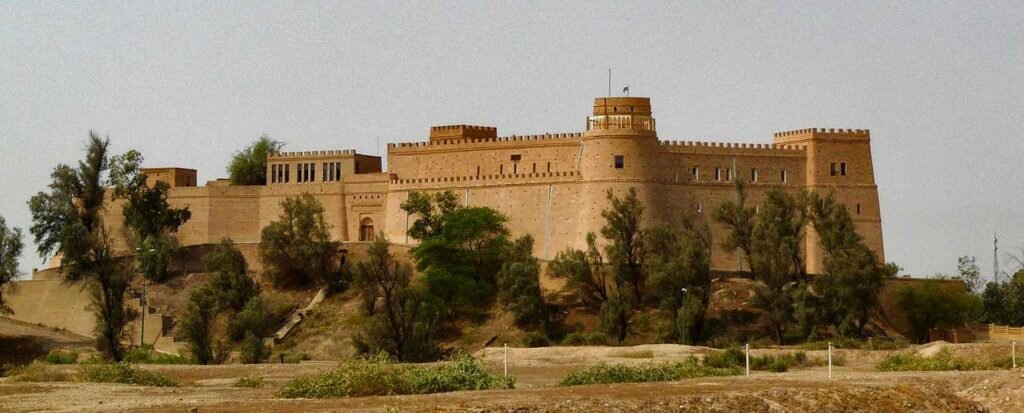Fortress within UNESCO-listed Susa undergoes restoration

TEHRAN – Restoration work has commenced on a prehistorical fortress, which is part of the UNESCO-registered Susa in southwest Iran.
Located in the lower Zagros Mountains, in the Susiana plains between the Karkheh and Dez Rivers, Susa was one of the oldest yet magnificent cities in the world.
“First of all, we surveyed to assess and document the current condition of this historical fortress,” the director of the World Heritage site said on Tuesday.
“Then, we undertook the improvement of the sewage disposal system, the laying of brick pavement, and the replacement of worn-out sections of flooring, along with repairing the courtyard's drainage.”
The restoration work is still underway, the official said.
The World Heritage comprises a group of artificial archaeological mounds rising on the eastern side of the Shavur River, encompassing large excavated areas, as well as the remains of Artaxerxes' palace on the other side of the Shavur River.
Susa was formerly the capital of the Elamite Empire and later served as the administrative capital of Achaemenian King Darius I and his successors starting from 522 BC.
Excavations have revealed evidence of continuous human habitation dating back to around 5000 BC, with the earliest urban structures dating to approximately 4000 BC.
UNESCO notes that the excavated architectural monuments encompass administrative, residential, and palatial structures. The site boasts multiple layers of urban settlement spanning from the 5th millennium BC to the 13th century CE.
Artifacts discovered in the region illustrate the exceptional quality of even the earliest pottery and ceramics in Susa, adorned with intricate designs featuring birds, mountain goats, and various animals.
The highest-quality pottery, found in the lowest layers, belonged to two distinct Neolithic civilizations, as indicated by Britannica.
The archaeological site, initially identified by W.K. Loftus in 1850, consists of four mounds. One mound contained the citadel, which was excavated (1897–1908) by Jacques de Morgan. Notable findings included the obelisk of the Akkadian king Manishtusu, the stele of his successor Naram-Sin, and the code of Hammurabi of Babylon. Another mound to the east held the palace of Darius I, excavated around 1881 by Marcel Dieulafoy. A third mound to the south housed the royal Elamite city, while the fourth mound consisted of less affluent housing.Following the decline of the Achaemenid Empire and the reign of Alexander the Great, who married in Susa, the city became part of the Seleucid Empire, renamed Seleucia on the Eulaeus. A Greek-style palace was constructed beside Darius’ palace. However, the administrative hub was situated in the southern part of the city, where the majority of Greek and Parthian inscriptions were found. During the Parthian era, the city minted coins.
During the Sasanian period, Susa had a sizable Christian community. It was raided by Sasanian King Shapur II, who relocated the populace to Iwan-e Karkheh. Nonetheless, Susa sufficiently recovered in the early seventh century to resist against the Arabs, who eventually captured the city. Susa remained significant until the thirteenth century CE.
AFM
